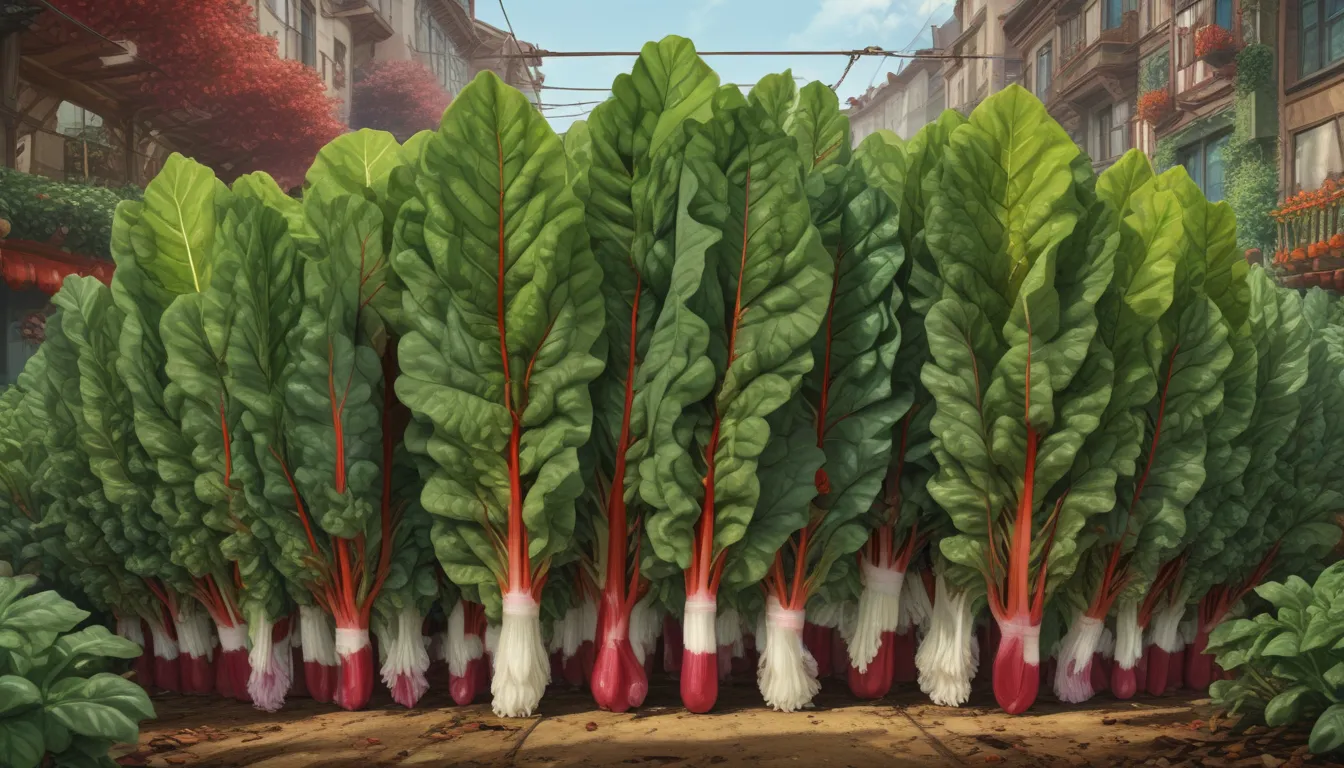How to Grow Swiss Chard for a Bountiful Fall Harvest

Are you looking to extend your growing season for fresh, crisp greens into the fall? Look no further than Swiss chard. With its vibrant colors, nutritional value, and ease of growth, Swiss chard is a perfect addition to your autumn garden.
In this article, we will delve into the world of Swiss chard, sharing valuable information on how to plant, grow, and harvest this versatile vegetable for a delicious fall harvest.
Swiss Chard Primer
Let’s start with the basics. Swiss chard, also known as leafy beet or perpetual spinach, is a member of the Amaranthaceae family. Native to the Mediterranean, this biennial plant produces brightly colored stems and veins that contrast beautifully with its leaves of bronze, green, or purple.
Rich in essential vitamins and minerals, Swiss chard boasts a mild, earthy flavor similar to spinach. Whether enjoyed raw in salads or cooked in soups and stews, this leafy green is a versatile addition to any kitchen.
Timing Your Fall Crop
To ensure a successful fall harvest, it’s crucial to time your planting correctly. Direct sow Swiss chard seeds in mid-July to mid-August, or approximately 50 days before your first autumn frost date. This timing allows the plants to mature before the arrival of freezing temperatures.
Succession planting until mid-August can help extend your harvest, providing you with a continuous supply of fresh Swiss chard throughout the season.
Growing Tips
Here are some essential tips to ensure a successful autumn harvest:
- Sunlight: Swiss chard thrives in full sun but can tolerate partial sun.
- Soil: Plant in well-draining soil enriched with compost or manure.
- Water: Provide ample water, especially during the seedling stage.
- Spacing: Plant seeds half an inch deep, spacing them two to six inches apart.
- Fertilizer: Apply a balanced water-soluble fertilizer halfway through the growing season.
By following these tips, you’ll set yourself up for a bountiful harvest of Swiss chard in the fall.
How and When to Harvest
Harvesting Swiss chard is a simple and rewarding process. Cut stems with a sharp knife, leaving two inches above the soil. Swiss chard is a “cut-and-come-again” crop, allowing you to harvest outer leaves while allowing new growth to flourish.
For the best flavor and quality, harvest full-sized plants when they reach 12 to 14 inches in height. Avoid overgrown plants as their flavor may deteriorate.
Fall Cultivars to Select
When selecting Swiss chard cultivars for your fall garden, consider varieties with a short growing season of 50 to 55 days. Here are some recommended cultivars to try:
- Bright Lights: A colorful mix of gold, orange, pink, and purple stems.
- Lucullus: An old-time favorite with light green leaves and white stalks.
- Orange: Bright orange stalks and crumpled dark green leaves.
- Perpetual Spinach: Lightly rumpled leaves with white stems.
- Red Magic: Vibrant cranberry red stems with maroon leaves.
- Ruby Red: Glorious red stems with deep green leaves.
- Yellow: Ornamental variety with yellow stems and dark green leaves.
By selecting these cultivars, you can enjoy a variety of colors and flavors in your fall harvest of Swiss chard.
One Cool Crop
In conclusion, Swiss chard is a fantastic addition to your autumn garden. With its vibrant colors, nutritional value, and versatility in the kitchen, Swiss chard is a must-have for fall crops.
By following the tips and recommendations in this article, you can grow and harvest Swiss chard with ease and enjoy a bountiful supply of fresh greens throughout the season.
Do you have a favorite Swiss chard variety? Share your experiences in the comments below. And for more information on growing Swiss chard, check out our related guides on the best chard varieties, companion plants, and common diseases.
Happy gardening!





